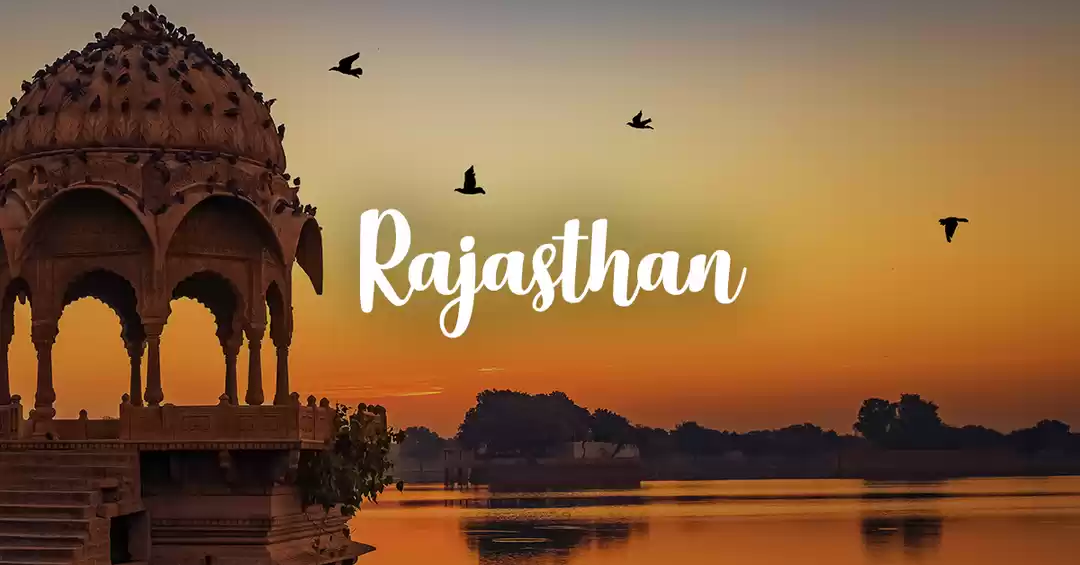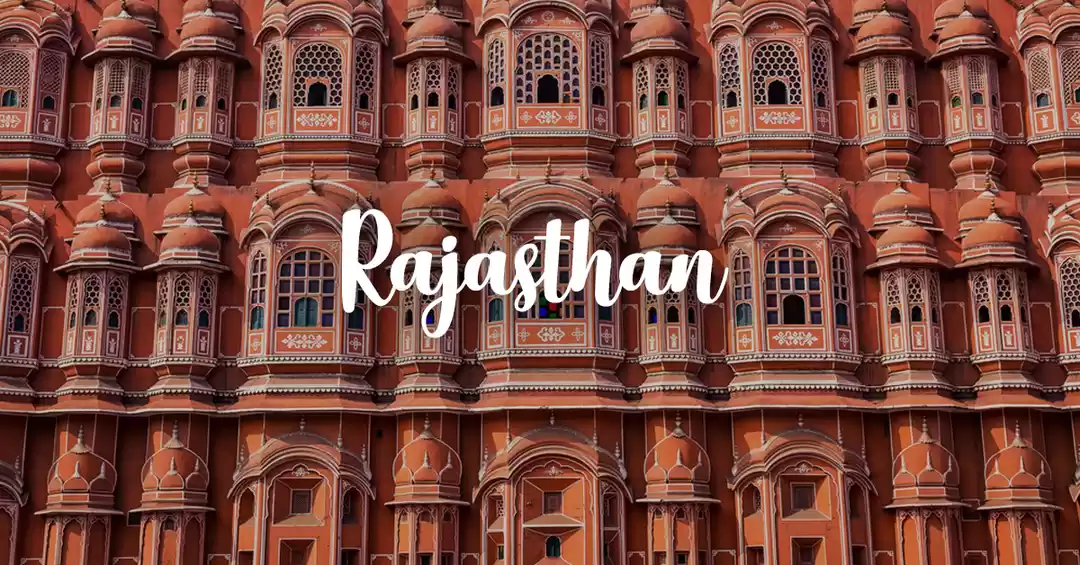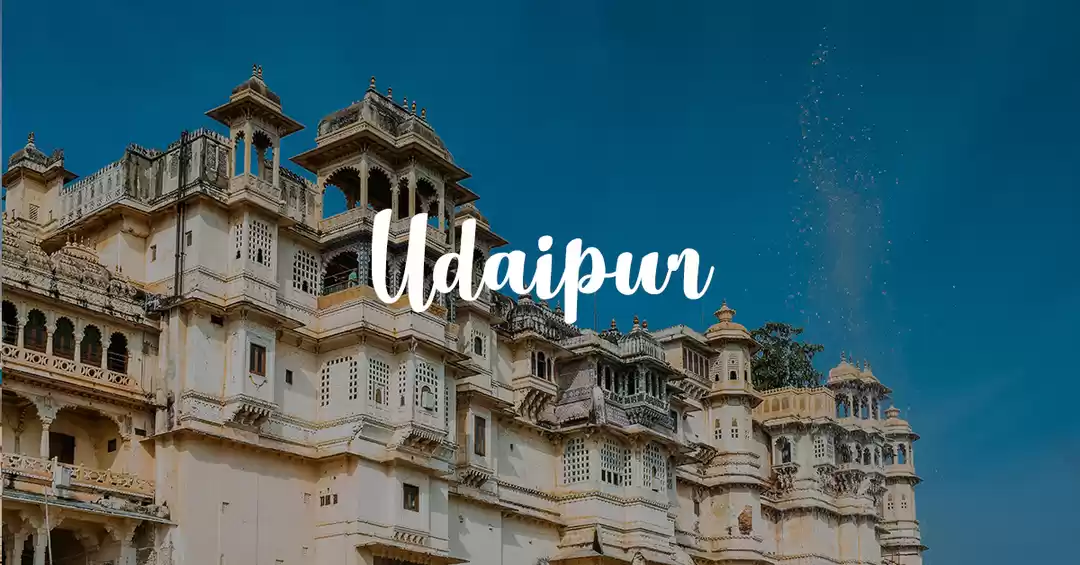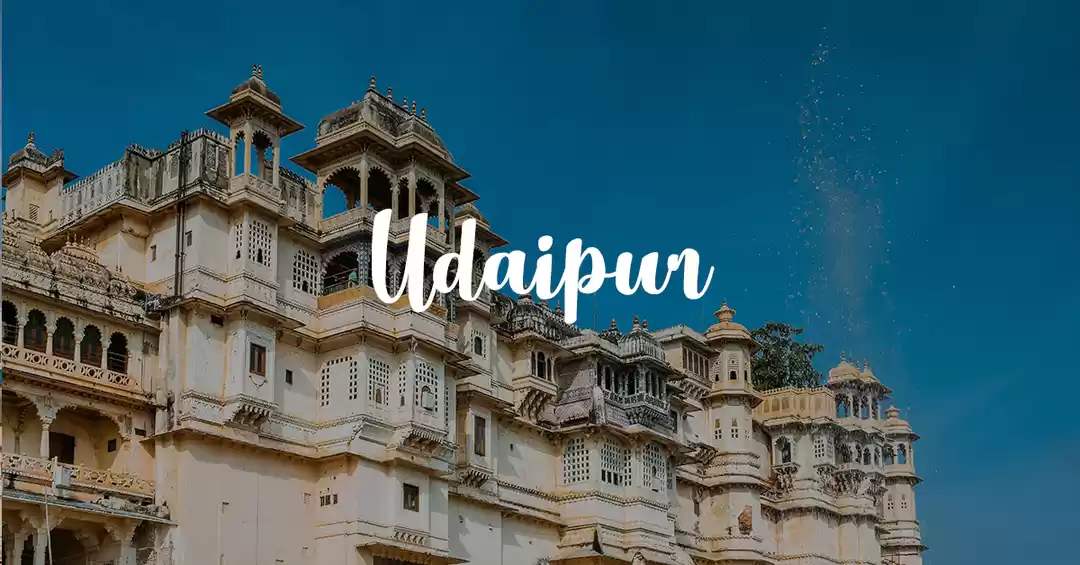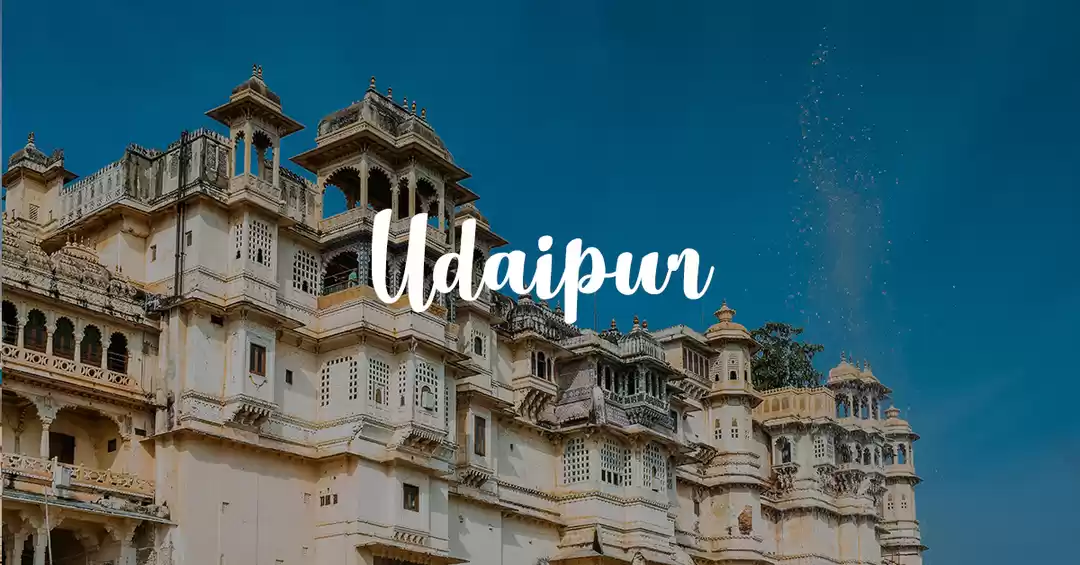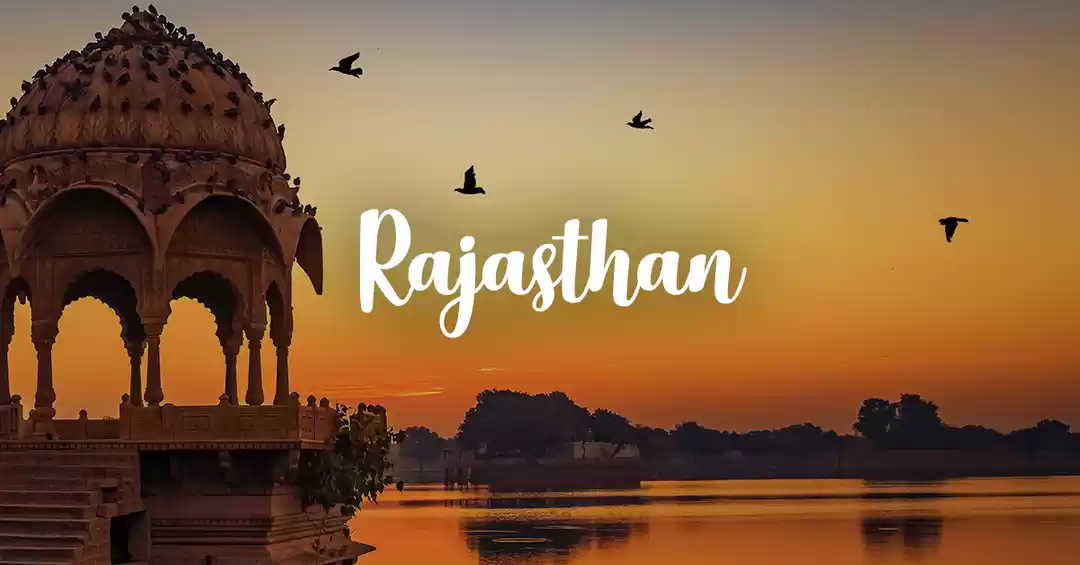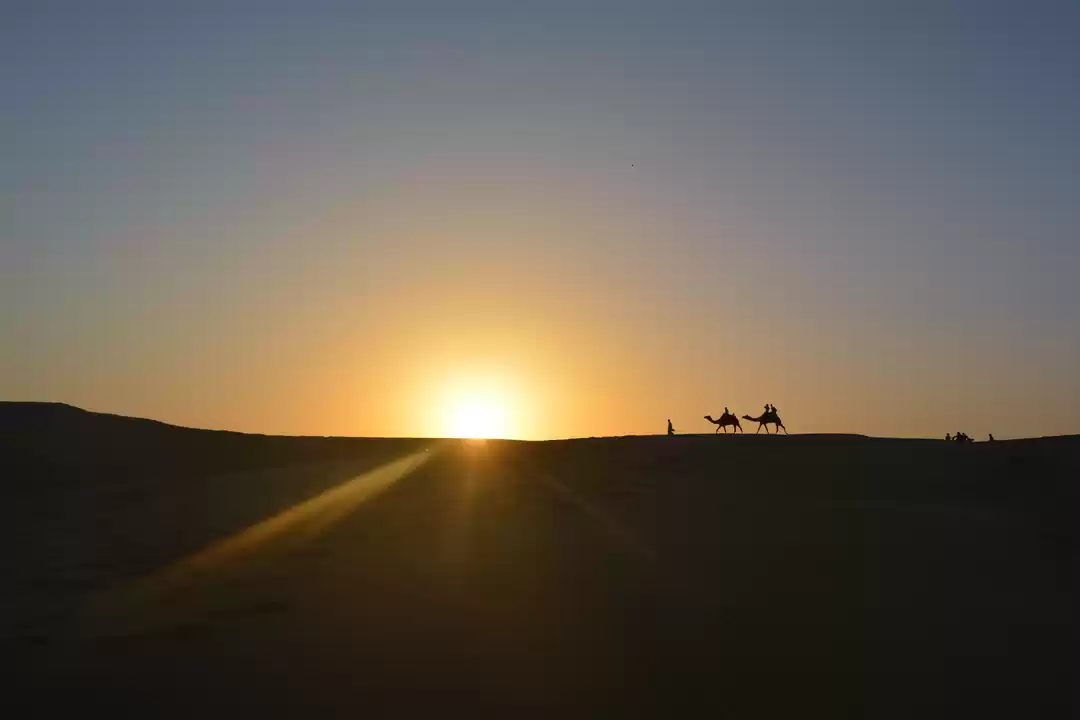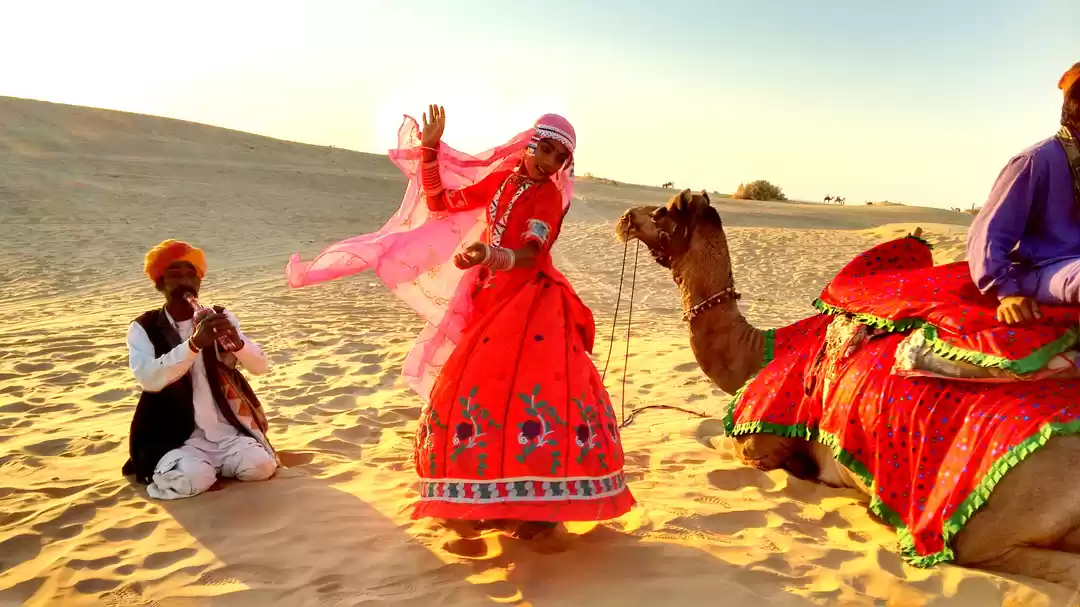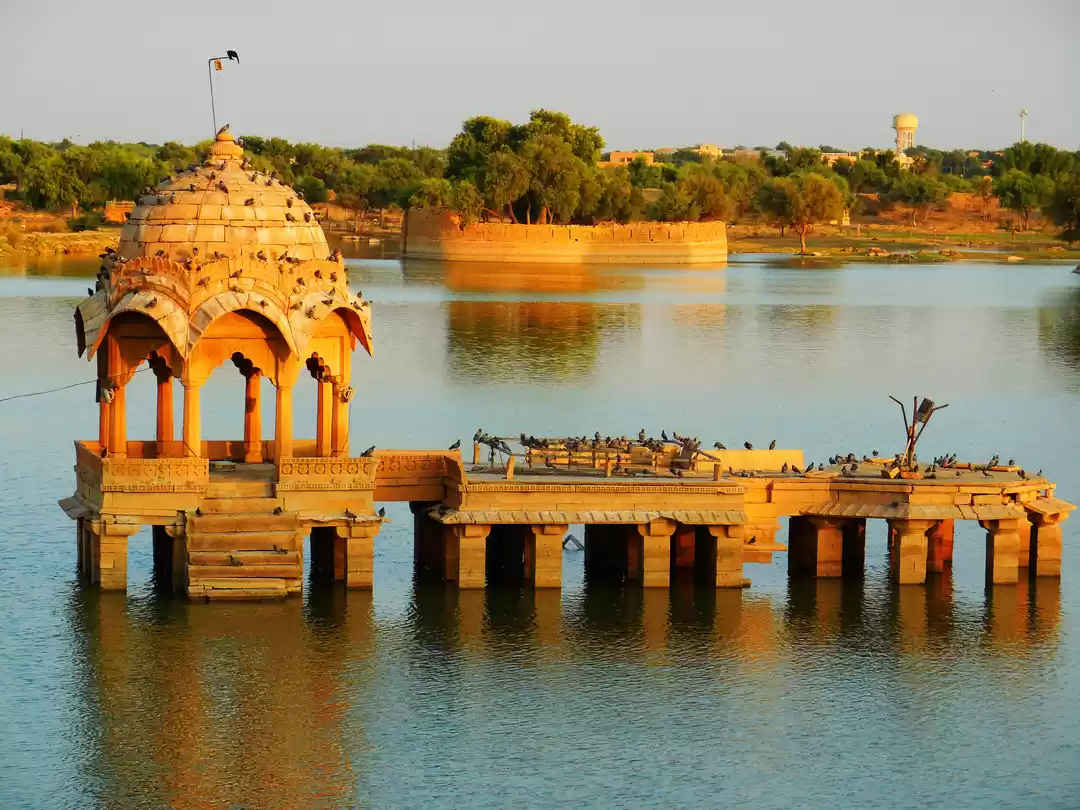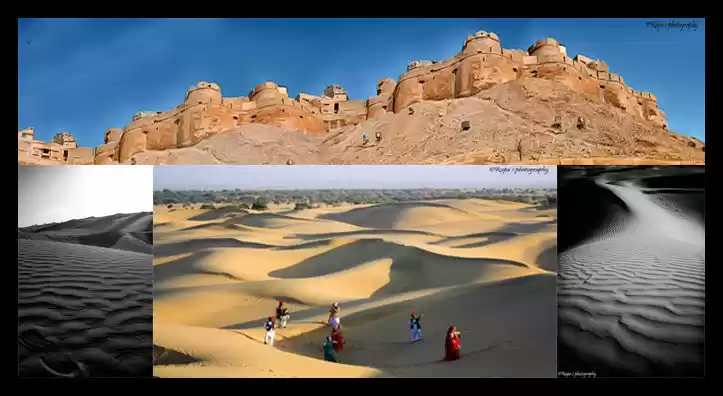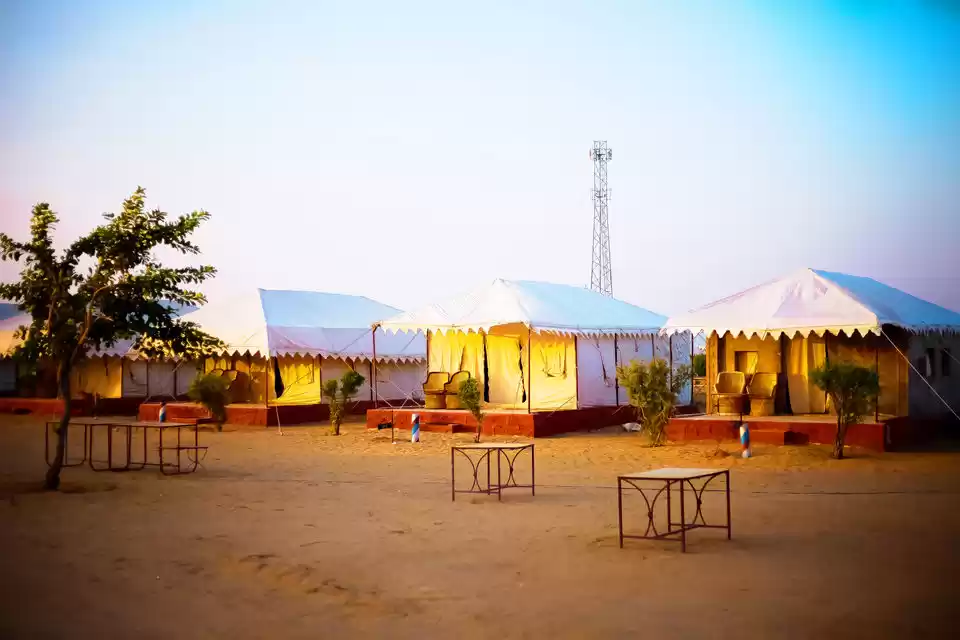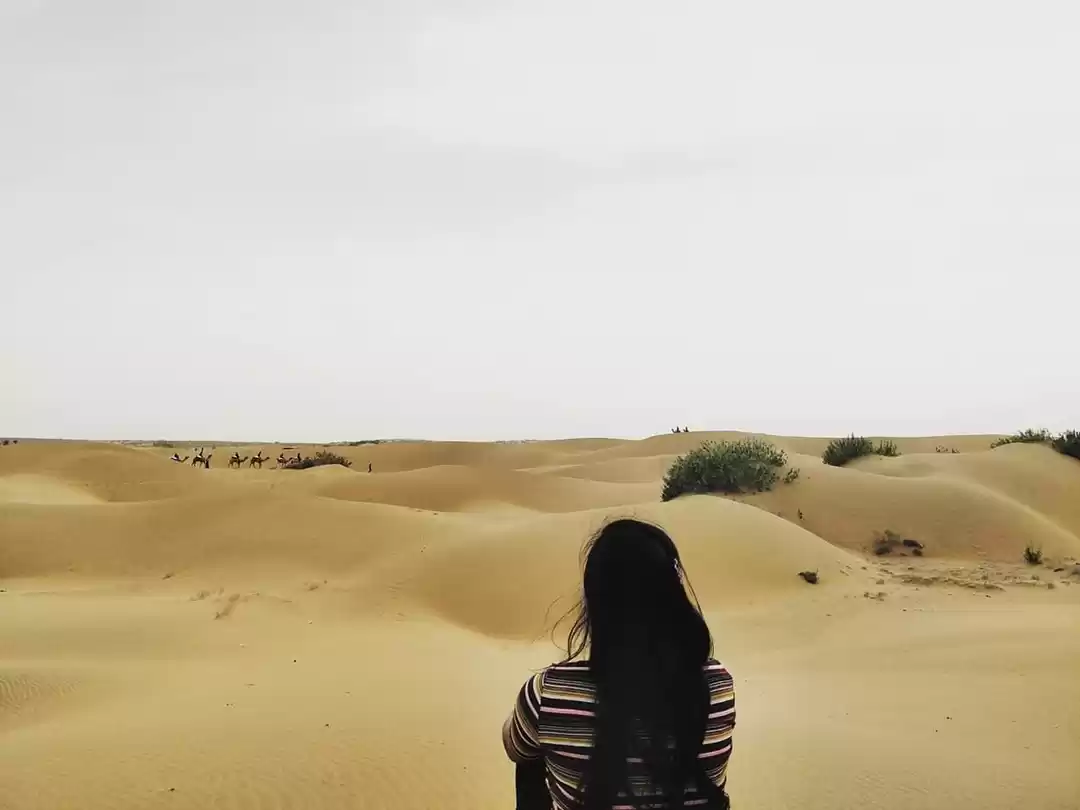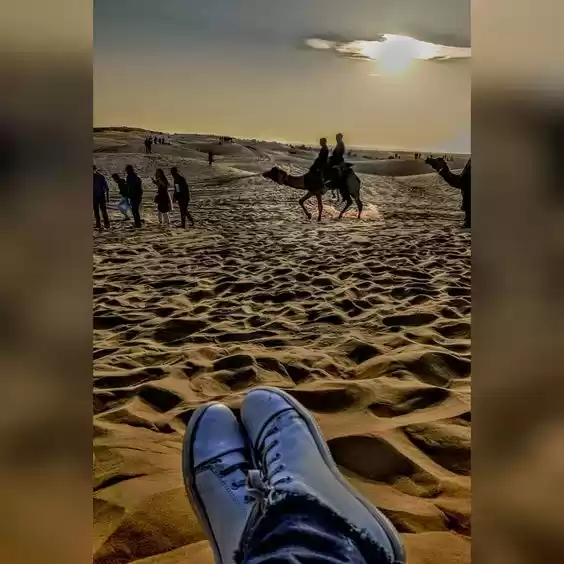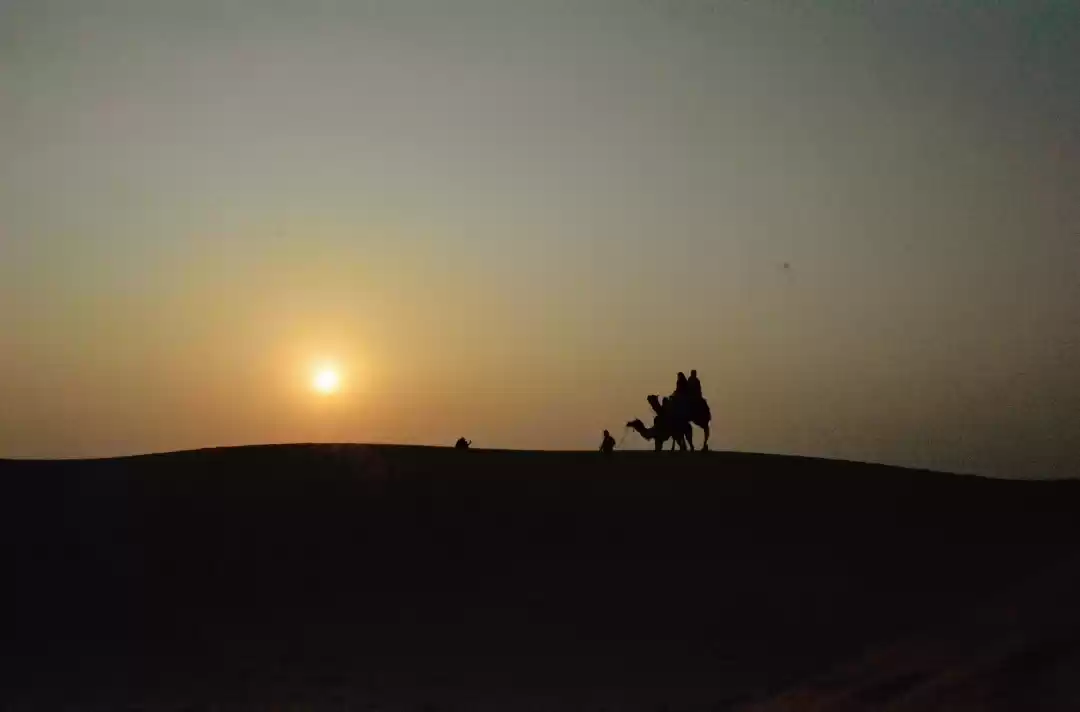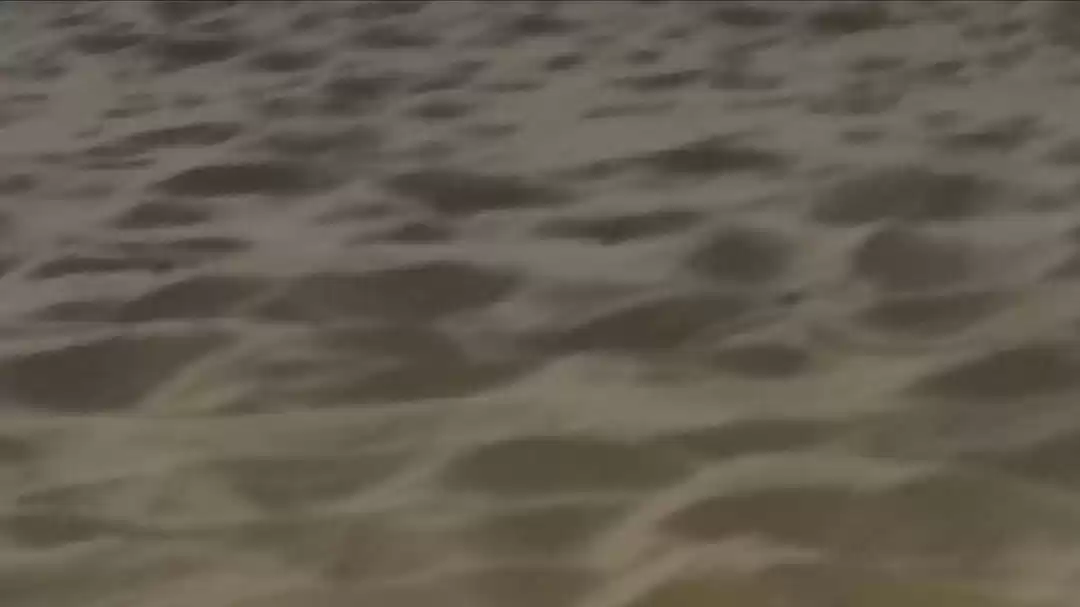

Jaisalmer town, nicknamed "The Golden city", is a city in the Indian state of Rajasthan, located 575 kilometres (357 mi) west of the state capital Jaipur. Once known as Jaisalmer state it is a World Heritage Site. The town stands on a ridge of yellowish sandstone, and is crowned by the ancient Jaisalmer Fort. This fort contains a royal palace and several ornate Jain temples. Many of the houses and temples of both the fort, and of the town below, are built of finely sculptured sandstone. The town lies in the heart of the Thar Desert (the Great Indian Desert) and has a total population, including the residents of the fort, of about 78,000. It is the administrative headquarters of Jaisalmer District.
Jaisalmer is connected to the rest of Rajasthan by buses provided by Rajasthan State Transport Corporation as well as other private bus operators. The airport was inactive but Spice Jet has now started flight from Delhi since 29th October 2017. Jaisalmer railway station runs daily trains between Jaisalmer and Jaipur, through which it is connected to Delhi and other cities all over India. This station comes under NWR zone and JU division. Additionally, there exists a luxury tourist train known as Palace On Wheels, which covers the major tourist destinations of Rajasthan, including Jaisalmer. The main occupation of people of Jaisalmer is farming. Many people also work as drivers and cab owners who provide transportation to tourists.

Jaisalmer Fort is situated in the city of Jaisalmer, in the Indian state of Rajasthan. It is believed to be one of the very few (perhaps the only) “living forts” in the world, as nearly one fourth of the old city's population still resides within the fort. For the better part of its 800-year history, the fort was the city of Jaisalmer. The first settlements outside the fort walls, to accommodate the growing population of Jaisalmer, are said to have come up in the 17th century.
Jaisalmer Fort is the second oldest fort in Rajasthan, built in 1156 AD by the Rajput Rawal (ruler) Jaisal from whom it derives its name, and stood at the crossroads of important trade routes (including the ancient Silk road).
The fort's massive yellow sandstone walls are a tawny lion colour during the day, fading to honey-gold as the sun sets, thereby camouflaging the fort in the yellow desert. For this reason it is also known as the Sonar Quila or Golden Fort. The fort stands amidst the sandy expanse of the great Thar Desert on Trikuta Hill. It is today located along the southern edge of the city that bears its name; its dominant hilltop location making the sprawling towers of its fortifications visible for many miles around.
In 2013, at the 37th session of the World Heritage Committee held in Phnom Penh, Cambodia, Jaisalmer Fort, along with 5 other forts of Rajasthan, was declared a UNESCO World Heritage Site under the group Hill Forts of Rajasthan.

Location: In the outskirts of Jaisalmer, 42 K.M. from the main town
How to reach: Jeep or any other 4 wheel drive SUV or Camel back according to your convenience
Famous for: Sand, sands and only sands
There is no point coming to the Thar Desert if you don't go for the Desert Safari. That is why Sam sand dunes are becoming the major attraction in Jaisalmer. This is the closest place from where you can loose yourself in 'the Great Thar Desert'. Sam has a truly magnificent stretch of sweeping dunes, with sparse or no vegetation. The best way to get here, of course, is on camelback.
Join a camel caravan at Jaisalmer on your Rajasthan tours and ride along the breathtaking crests and troughs. Enjoy the romance of solitude as your camel takes you deep in the hearts of the Thar Desert. Put yourself in the camp and experience the sun setting behind the horizon. Organize a bonfire with the fellow tourists in the night and enjoy the rustic and earthy music and dance of Rajasthan.
In the month of February/March, this whole place turns into a cultural hub. The desert festival organized amid these dunes is the showcase of Rajasthani culture as a whole. Open-air cultural extravaganzas, puppet shows, folk dance performances, camel races, competitions and general festivities mark this annual event that is held with great pomp and show at the Sam Sand dunes in Jaisalmer, Rajasthan.


Perfect happiness is a beautiful sunset, the giggle of a grandchild, the first snowfall. It's the little things that make happy moments, not the grand events. Joy comes in sips, not gulps.


Sam sand dunes, is one of the most authentic desert dune site in whole India, where you will find 30-60 meter tall sand dunes, and many travelers enjoying Desert Safari on camels or jeep, Sam is 45 km west from Jaisalmer city, where you can reach by hiring a can from Jaisalmer city and then stay in one of many desert camps, built in 2-3 km radius of sand dunes.
The best time to reach Sam sand dunes is around evening (sunset) at around 4-7 PM or early morning, during sunrise time of 4 to 6 am. You can book a camel or jeep (which is available at desert camps) to reach.the sunset point, that is 20-30 minutes from the campsite.
The best time to visit Sam or even Jaisalmer is from October to March (Feb) as in the renaming months, all the camps are closed and only few camel riders will be available. As as many travelers love to attend the evening musical program at Sam (at the desert camps), you won’t be able to attend them in summer and monsoon months.

Rajasthan has a diverse collection of musician castes, including langas, sapera, bhopa, jogi and Manganiar. There are two traditional classes of musicians: the Langas, who stuck mostly exclusively to Muslim audiences and styles, and the Manganiars, who had a more liberal approach.
Traditional music includes the women's Panihari songs, which lyrically describes chores, especially centered on water and wells, both of which are an integral part of Rajasthan's desert culture. Other songs, played by various castes, normally begin with the alap, which sets the tune and is followed by a recital of a couplet (dooba). Epic ballads tell of heroes like Devnarayan Bhagwan, Gogaji, Ramdeoji, Pabuji and Tejaji. The celebration of changing seasons is also very central to folk music of Rajasthan. Celebration of the coming of the Monsoons or the harvest season are central to most traditional folk songs. Songs also revolve around daily activities of the local people for instance a song about not sowing Jeera (Cumin) as it is difficult to tend. Or for instance another song about Podina (Mint) and how it is liked by various members of the family (an allegorical reference to a local liquor extracted from mint is also made). Every day common themes are the center of traditional rajasthani folk music.
One of the most famous Rajasthani Maand singers is Allah Jilai Bai of the Bikaner Gharana.
What makes the desert beautiful is that somewhere it hides a well.







